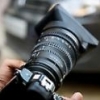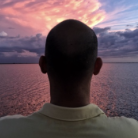-
Posts
157 -
Joined
-
Last visited
Reputation Activity
-
 coranda got a reaction from gregoryb in Flip Golden Spiral
coranda got a reaction from gregoryb in Flip Golden Spiral
Type Shift -O and it will flip/rotate sequentially through all four positions.
-
 coranda got a reaction from AffinityNewbie7 in Affinity Photo: stroke a selection
coranda got a reaction from AffinityNewbie7 in Affinity Photo: stroke a selection
I don't think there's a way to do that in AP, but perhaps someone can correct me. A workaround is to make your selection, from the Select menu choose Outline and you'll be able to create a selection of variable thickness that runs along the boundary of the original selection. To stroke it, create a new pixel layer and use the flood fill tool in the selection.
It's not ideal but it's a workaround until a better way becomes available.
-
 coranda got a reaction from Alasdair Gillespie in Erwerbt Aperture von Apple
coranda got a reaction from Alasdair Gillespie in Erwerbt Aperture von Apple
All valid points Habakuk, but my, perhaps jaundiced, view is that Apple is not a technology seller. It either develops it or it tries to kill it. If Apple doesn't want to develop Aperture I can't see them letting someone else have it. I may be wrong (I hope I am) but I think they see the future of photography as over-processed jpegs in the cloud and don't want to waste development time on software that can't run on an iPad.
Arguably, the current state of Logic Pro X and Final Cut X suggests otherwise, so perhaps I am wrong. But. deep down, I believe Apple judges the value of its software by how much hardware it helps them sell. I suspect their market research lead them to believe that very few people were ditching Windows for OS X because they wanted to use Aperture and so they judged Aperture to be a net financial loss.
If they let someone else have Aperture and they turned it into a success, causing the press to criticise Apple for abandoning it, (or even worse, develop it for Windows) then I don't think Apple management would be happy.
-
 coranda got a reaction from AffinityAppMan in Dodge and burn on a 50% grey layer
coranda got a reaction from AffinityAppMan in Dodge and burn on a 50% grey layer
I just tried it the way I normally do it in PS and I got it to work. You can't use a fill layer as I tried. I created a new, empty layer and used the paint bucket to fill it with 50% grey. I then switched the blend mode to overlay and it worked as expected. Painting in black with low opacity will burn and painting in white will dodge.
I hope this is useful to you.
-
 coranda got a reaction from pedrojua in Flip Golden Spiral
coranda got a reaction from pedrojua in Flip Golden Spiral
Type Shift -O and it will flip/rotate sequentially through all four positions.
-
 coranda got a reaction from Ic3man in Creating Flexible Luminosity Masks in AP
coranda got a reaction from Ic3man in Creating Flexible Luminosity Masks in AP
There have been a couple of threads recently relating to luminosity masks and the limited flexibility available in AP. In one of those threads csp proposed blending options as a better way to do this which set me thinking about how that could work. I have produced a quick, simple video that explains a way to generate a very flexible luminosity mask using blend options. I hope some of you may find it useful.
Thanks to csp for the original idea.
http://youtu.be/2NfimjzLdbA
-
 coranda got a reaction from Greebo in Flip Golden Spiral
coranda got a reaction from Greebo in Flip Golden Spiral
Type Shift -O and it will flip/rotate sequentially through all four positions.
-
 coranda got a reaction from ronnyb in Creating Flexible Luminosity Masks in AP
coranda got a reaction from ronnyb in Creating Flexible Luminosity Masks in AP
There have been a couple of threads recently relating to luminosity masks and the limited flexibility available in AP. In one of those threads csp proposed blending options as a better way to do this which set me thinking about how that could work. I have produced a quick, simple video that explains a way to generate a very flexible luminosity mask using blend options. I hope some of you may find it useful.
Thanks to csp for the original idea.
http://youtu.be/2NfimjzLdbA
-
 coranda got a reaction from PaulDean in Flip Golden Spiral
coranda got a reaction from PaulDean in Flip Golden Spiral
Type Shift -O and it will flip/rotate sequentially through all four positions.
-
 coranda got a reaction from peter in Why did you choose the file format extensions .afdesign and .afphoto instead of shorter variants like .afd or .afp?
coranda got a reaction from peter in Why did you choose the file format extensions .afdesign and .afphoto instead of shorter variants like .afd or .afp?
This is just a guess but I suspect Serif is just being progressive. The idea of 3 a character file extensions harks back to the memory/storage limitations of very early microcomputers where the standard was 8.3, that is, file names of no more than 8 characters followed by a 3 character extension. Modern operating system long ago ditched the 8 character name limitation but, for some reason, the 3 character extension has lived an artificially long life.
Also, 3 characters is very limiting in terms of creating a unique file type identifier that is also mnemonically meaningful. The extensions .ade and .aph, for example, have already been used by other software.
-
 coranda got a reaction from JFisher in Digital Projected Images - 3 pixel white border
coranda got a reaction from JFisher in Digital Projected Images - 3 pixel white border
Here's one way to do it but it's harder than it should be. Perhaps someone can come up with a better way. It would be easier if the Resize Canvas process allowed selection of the colour of the extended canvas area.
1. Get your image to the size you want it.
2. Resize the canvas adding 3 pixels on each side.
3. Create a new fill layer, drag it to the bottom of layer stack and set its colour to white.
4. Right click on the fill layer and select Rasterise.
5. Resize canvas to the final desired size (1400 x 1050).
6. Create a new fill layer, drag it to the bottom of the layer stack and set its colour to black.
Note that step 4 is important, otherwise the white fill layer will expand to the final size and hide the black layer.
This works if you have created a file with a transparent background. I haven't tested if it works with a white background.
-
 coranda got a reaction from anon1 in beta?
coranda got a reaction from anon1 in beta?
Gary,
Can you be more specific about your problem. Affinity Photo is so much more advanced than Pixelmator that I find it hard to understand what you find is missing. As far as I'm aware Pixelmator, for all its charms, still doesn't even have channels which makes it next to useless for serious image editing.
-
 coranda got a reaction from MacGueurle in beta?
coranda got a reaction from MacGueurle in beta?
Gary,
Can you be more specific about your problem. Affinity Photo is so much more advanced than Pixelmator that I find it hard to understand what you find is missing. As far as I'm aware Pixelmator, for all its charms, still doesn't even have channels which makes it next to useless for serious image editing.
-
 coranda reacted to JasperD in What's the point of the Develop Persona?
coranda reacted to JasperD in What's the point of the Develop Persona?
Just quoting the single part covering more than 80% of my processing with Photoshop CS6!
Thank you for spelling it out! Yes, it really makes a truly huge difference...
-
 coranda got a reaction from JasperD in What's the point of the Develop Persona?
coranda got a reaction from JasperD in What's the point of the Develop Persona?
Raw conversion is an essential first step in processing any digital image (whether in camera or in post processing) because without raw conversion there really isn't an image in the sense that most users expect. All a raw convertor really needs to provide is:
- demosaicing
- gamma correction
- exposure adjustment
Modern raw convertors offer all sorts of options that, arguably, are not a good idea because best practice is to use exposure control to recover highlight details and do nothing else in the raw conversion. Subsequent processing requires features not available in raw conversion - in particular, double processing.
However, that approach means turning every image into a tiff/psd type file which requires a substantial amount of storage space.
So, in an ideal world, raw convertors would have nothing more than an exposure slider for highlight recovery. In practice, when you have hundreds/thousands of images to process, it's often more convenient to completely process most of them in a raw convertor like ACR and reserve PS/AP for those special images you want to extract the most from.
The problem with AP is that its raw convertor must convert all processed images into separate, large files. ACR makes it possible to store all of the processing in small sidecar files.
So what I'm basically saying is that it can be advantageous to have a very capable raw convertor that avoids the need to use PS if it gives you an advantage in terms of compact storage of the raw processing. But, if the ultimate intention is to load the image into PS/AP for further processing, the raw convertor should have nothing more than a single exposure slider and all other processing should be in PS/AP - which may include offering the traditional raw processing options as an adjustment layer the way PS does.
-
 coranda got a reaction from JasperD in What's the point of the Develop Persona?
coranda got a reaction from JasperD in What's the point of the Develop Persona?
There are people for whom ACR is their only raw convertor and who use no DAM software. They simply copy the raw files from their memory cards to their hard drive. For that reason I think it's important for AP to have its ACR equivalent. This will become particularly relevant if AP eventually takes on some of the current features of ACR/PS. In particular I'm thinking about:
Storing just the develop settings (side car files for example) so that it is possible to develop images without the need to convert them all to .afphoto files which are necessarily very large files by comparison. Many people don't take most of their images into PS and so they don't need to store psd files as well as raw. There is currently no equivalent workflow for AP. The ability to insert the develop settings as a layer so that they can be modified after the image has been edited in the photo persona. -
 coranda got a reaction from anon1 in Green Screen
coranda got a reaction from anon1 in Green Screen
Green fringes are very common with green screen images particularly on hair. In the case of hair it's usually because the screen is partially visible through the hair. On other parts of the body it can be caused by the lighting setup. There is often lots of green light reflecting off the screen and bouncing around the room.
Have you tried. Using the de-fringing filter?
-
 coranda got a reaction from gary1948 in Affinity on Mac OS El Capitan 15A234d
coranda got a reaction from gary1948 in Affinity on Mac OS El Capitan 15A234d
You need the latest beta. Go to the beta test forum to download it.
-
 coranda got a reaction from justwilliam in How do i put my picture back into iphoto?
coranda got a reaction from justwilliam in How do i put my picture back into iphoto?
If you go to Preferences... in iPhoto, on the Advanced tab, there is an option to edit in another application. I haven't tried it (I don't use iPhoto) but it might be worth playing with.
-
 coranda got a reaction from justwilliam in Highlights recover
coranda got a reaction from justwilliam in Highlights recover
I was taught never to use the highlights slider in a raw convertor. Best practice, I'm told, is to use the exposure slider to recover highlights. This will likely make the shadows (and possibly mid-tones) too dark but that's a separate issue to be dealt with - usually with some form of manual or automated double processing.
-
 coranda reacted to Ben in Exporting an .AI file not possible - best alternative?
coranda reacted to Ben in Exporting an .AI file not possible - best alternative?
@Oval
We've said this before - clearly. If you require 100% Adobe compatibility - you need Adobe products. We are not writing a cheap replacement for Adobe for you, and no other third party company is either. If you want the best support for the publicly accessible formats, then we are striving to make Affinity that product. We are also fundamentally different to Adobe's products in certain areas for very good reasons, and where these differences mean no one-to-one mapping we try to offer conversion, but with the caveat that there is no reliable round-trip import-export of such features (hence why some features get rasterised).
As far as any other company having knowledge of Adobe's proprietary formats - there are none. Adobe only publishes a subset of the PSD specification, and even that is riddled with inaccuracies and omissions. You may be referring to the availability of documented legacy Adobe formats - but they lack many of the current features.
And, as far as reverse engineering a proprietary binary format goes - that is a mammoth task (not to mention a violation of certain laws). It's not realistically ever going to happen.
Also, AI version 8 is not native - it is legacy. It is not a good choice for a current exchange format.
-
 coranda got a reaction from anon1 in Tethering with Affinity
coranda got a reaction from anon1 in Tethering with Affinity
Tethering, in applications like Lightroom, allows you to control the camera configuration from the computer, view the live image on screen and take the shot. The file is then immediately uploaded into the programme for editing.
It's arguably more appropriate for a DAM programme rather than a photo editor like AP.
-
 coranda reacted to pxls2prnt in If I purchase AD will I be grandfathered in for life?
coranda reacted to pxls2prnt in If I purchase AD will I be grandfathered in for life?
Think of it like the old days of Adobe when you had to purchase each version of Photoshop if you wanted to upgrade—before the Creative Cloud model—only more reasonably priced. ;)
-
 coranda got a reaction from MacGueurle in Dreariest new editing interface?
coranda got a reaction from MacGueurle in Dreariest new editing interface?
The tools in AP are only grey when you haven't got an image loaded. Nonetheless, professional graphics programmes need to have bland grey interfaces, it's best practice. In fact, one of the criticisms I've read of AP is that it uses coloured icons in the toolbar. Similarly, a professional graphics workstation needs to be in a bland environment and should never be placed in front of a coloured wall, in a brightly lit room or have bright light directly incident on the screen.
It's because human beings have very flexible colour perception. Cameras need white balance adjustments because our eyes compensate for the ambient light in an environment. A white object under tungsten light will actually be quite yellow but to our eyes it will look white. Because we automatically alter our colour perception to suit the surrounding light it's very important to not distract ourselves with colour or bright light on the screen and walls of the room. That would influence our perception of the colours in the image and that must be avoided.
-
 coranda got a reaction from anon1 in Opacity / Fill
coranda got a reaction from anon1 in Opacity / Fill
My understanding is that, in PS, fill opacity affects the layer but not the layer effects, outer glow for example. In AP, if you add an effect like outer glow the dialogue box for the effect has a fill opacity slider that will control the opacity of the layer but not the effect. I don't know if this is equivalent but it might be worth investigating.












